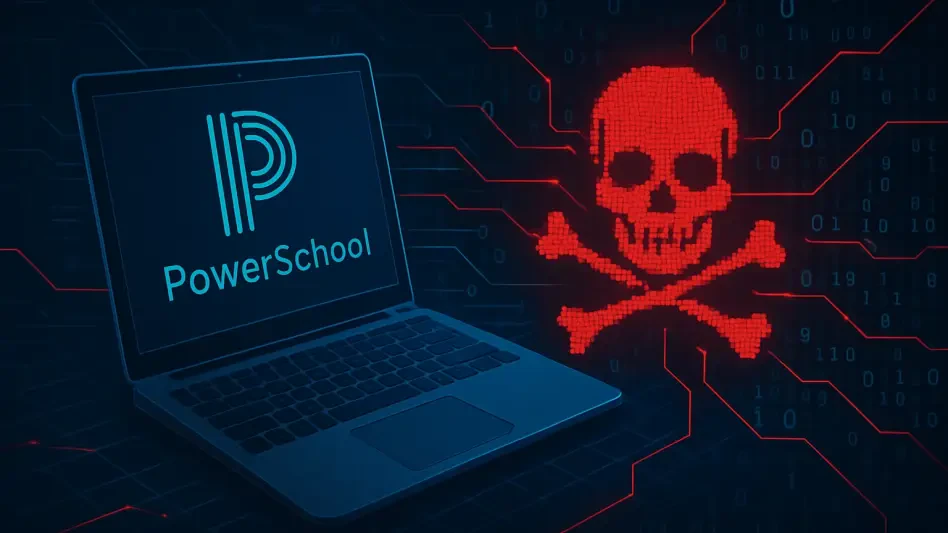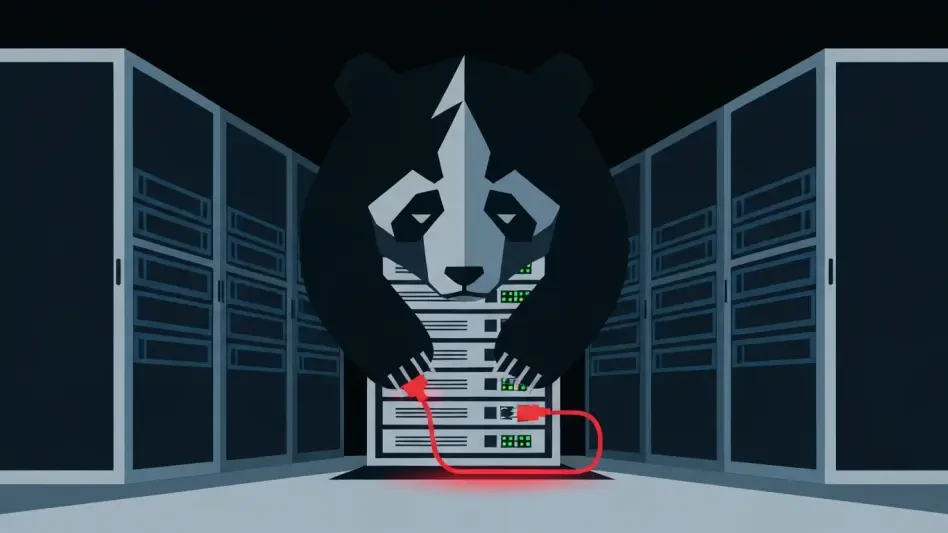What happens when a single individual can unravel the digital security of millions with just a few keystrokes, exposing the personal details of students and teachers nationwide? In a chilling case of cybercrime, 20-year-old Matthew Lane from Massachusetts pulled off one of the most audacious data breaches in American educational history by targeting PowerSchool, a leading education software provider. This staggering breach, affecting 60 million students and 10 million teachers, has left schools, families, and cybersecurity experts reeling from the fallout. The story of Lane’s crime, conviction, and the broader implications for data security unfolds as a stark reminder of the vulnerabilities lurking in digital systems.
Why This Breach Stings: The Fragility of Educational Data
The significance of this cyberattack cannot be overstated, as it strikes at the heart of a system trusted to safeguard sensitive information. PowerSchool, relied upon by countless schools across the United States, stores critical data—names, addresses, academic records, and more—that can be weaponized for identity theft or fraud if compromised. This incident exposes a growing trend of cybercriminals targeting critical infrastructure, with educational platforms becoming prime targets due to their vast repositories of personal information. For parents and educators, the breach raises urgent questions about the safety of digital tools integral to modern learning.
Beyond the immediate victims, the ripple effects of such attacks threaten public trust in educational institutions. A 2023 study by the Identity Theft Resource Center noted a 78% increase in data breaches targeting schools over the past five years, highlighting a systemic vulnerability. This case serves as a wake-up call, underscoring the need to prioritize cybersecurity in spaces where the most vulnerable, including young children, are at risk of lifelong harm from data exposure.
The Hacker’s Playbook: How Matthew Lane Pulled Off the Heist
Delving into the mechanics of Lane’s crime reveals a calculated and brazen operation. In September of last year, he exploited a contractor’s credentials to infiltrate PowerSchool’s database, gaining unauthorized access to records of 60 million students and 10 million teachers. This breach wasn’t a random act of mischief but a deliberate attempt to exploit sensitive data for profit, showcasing the sophistication of modern cybercriminals who prey on overlooked security gaps.
Following the initial hack, Lane escalated his scheme by demanding a ransom of nearly $2.9 million in December, threatening to leak the stolen information if PowerSchool refused to comply. Despite the company’s payment, it still incurred losses exceeding $14 million, a financial blow compounded by Lane’s subsequent extortion attempts against multiple school districts using the same compromised data. These actions amplified the harm, turning a single breach into a widespread campaign of intimidation and greed.
The financial toll of Lane’s actions remains staggering, with only $161,000 of his illicit gains forfeited while nearly $3 million remains unrecovered. This gap, compared to the $14.1 million in restitution ordered and a $25,000 fine, illustrates the immense challenge of reclaiming losses in cybercrime cases. The scale of this breach, combined with its cascading effects, paints a grim picture of the damage one individual can inflict on an entire sector.
Legal Reckoning: Prosecutors Demand Accountability
In the courtroom, federal prosecutors pushed for a harsh penalty to match the severity of Lane’s actions, seeking an eight-year prison sentence. Citing his history of cybercriminal activity dating back to 2015, they argued that lighter sentences in similar cases have failed to deter offenders, leaving society vulnerable to repeat attacks. Their concern extended to the millions affected, including children as young as five, who now face a lifelong risk of identity theft due to exposed personal data.
Ultimately, U.S. District Judge Margaret Guzman sentenced Lane to four years in prison, along with three years of supervised release. While this outcome marks a significant consequence, it fell short of the prosecutors’ recommendation, sparking debate about whether the punishment adequately reflects the gravity of the crime. The inclusion of additional charges related to a breach of an undisclosed U.S. telecommunications company further complicates the narrative, hinting at a broader pattern of criminal behavior.
Prosecutors’ warnings resonate beyond this case, pointing to a systemic issue in cybercrime sentencing. Their stance emphasizes that without stronger deterrents, the cycle of attacks on critical infrastructure like schools will persist, endangering vulnerable populations and undermining public safety. This legal battle highlights the tension between justice and prevention in an era of escalating digital threats.
Voices from the Fallout: Impact on Schools and Families
The human cost of Lane’s actions emerges vividly through the experiences of those affected. School administrators, grappling with the aftermath, have reported heightened anxiety among parents concerned about their children’s data being misused. One district superintendent, speaking anonymously due to ongoing investigations, described the breach as “a betrayal of trust,” noting that resources meant for education are now diverted to cybersecurity upgrades and crisis management.
For families, the fear of identity theft looms large, with many unsure how to protect themselves from potential fraud. Cybersecurity experts estimate that stolen student data can be sold on the dark web for as little as $1 per record, yet the cost to victims in time, money, and emotional stress is immeasurable. Stories of affected individuals underscore the personal toll, transforming abstract statistics into real-world nightmares for millions.
The broader educational community now faces a reckoning, forced to confront the reality that digital tools, while essential, can become liabilities without robust protections. Teachers, already burdened with countless responsibilities, must now navigate training on phishing prevention and data security protocols. This breach has not only disrupted lives but also reshaped the conversation around responsibility and readiness in educational environments.
Fortifying the Frontlines: Steps to Shield Education from Cyber Threats
Addressing the vulnerabilities exposed by this incident requires a multi-pronged approach tailored to the unique challenges of educational systems. Schools must prioritize strengthening access controls, implementing multifactor authentication to secure software platforms like PowerSchool. Regular security audits and rapid response protocols for breaches are also critical to minimizing damage when attacks occur, ensuring that institutions are not caught off guard.
Educators and students need training to recognize phishing attempts and safeguard credentials, a frontline defense against unauthorized access. Meanwhile, policymakers should advocate for increased federal funding and stricter regulations to protect critical infrastructure, recognizing that schools are as vital as any other public service. A 2024 report by the National Institute of Standards and Technology found that 62% of educational institutions lack adequate cybersecurity budgets, a gap that must be closed to prevent future disasters.
Collaboration between public and private sectors offers another pathway forward, with technology companies urged to enhance built-in security features for educational tools. Parents, too, can play a role by staying informed about data protection practices and pressing schools for transparency on security measures. These collective efforts aim to rebuild trust and fortify defenses against the ever-evolving landscape of cyber threats.
Reflecting on a Digital Disaster
Looking back, Matthew Lane’s sentencing to four years in prison by U.S. District Judge Margaret Guzman, coupled with three years of supervised release, stood as a pivotal moment in addressing one of the largest breaches of student data in U.S. history. The financial penalties, including $14.1 million in restitution and a $25,000 fine, aimed to hold him accountable, though the unrecovered $3 million in illicit gains lingered as a reminder of the challenges in fully rectifying such crimes. His surrender to the Federal Bureau of Prisons by December 1 marked the close of a chapter, but not the end of the struggle against cybercrime.
The enduring lesson from this case pointed toward proactive measures as the strongest defense. Schools and policymakers were urged to invest in cutting-edge cybersecurity frameworks, while families deserved clearer guidance on protecting personal information in a digital age. By fostering a culture of vigilance and accountability, society could better shield its most vulnerable from the fallout of future attacks, turning a grim lesson into a catalyst for lasting change.








